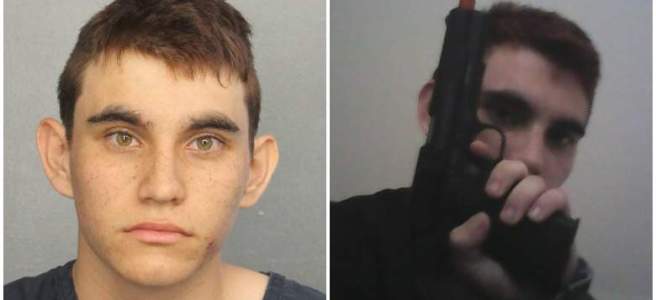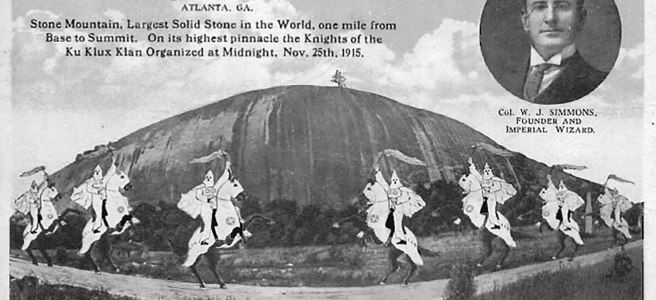January 23, 2021
Trump is gone. We survived the inauguration, not only unbloodied, but closer to united, which I am crediting to J. Lo. She sang a rousing rendition of “This Land is Your Land,” written by the OG Antifa Woody Guthrie. Besides Bernie’s mittens, the grand ritual was notable for one key sentence from the newly sworn in president. “And now, a rise in political extremism, white supremacy, domestic terrorism that we must confront and we will defeat.” It was a first for an inaugural address and a focus that is desperately needed.
I’ve written much in this blog about the threat of right-wing extremism and the through-line that connects the 1995 Oklahoma City Bombing to the January 6 attack on the Capitol. The 25,000 National Guardsmen and the collapse of the ludicrous QAnon prophecy helped us to deflate the threat this past week but that doesn’t mean the barbarians are not still at the gate, hoping to cripple our democracy. The election of Barack Obama (and a Democratic congress) in 2008 gave raise to the Tea Party movement. 2021 will see a post-Q antigovernment movement that, with the help of social media, will fuse all the bad actors of the past. It’s already a broad counterculture the ranges from Trump’s “suburban housewife” that still thinks Joe Biden is fronting an underground pedophile ring to the self-styled Timothy McVeigh-wannabe who plots to bring down federal office buildings to strike a blow against the “Zionist Occupation Government.”
So what do we do now?
If President Biden is sincere about confronting political extremism and white supremacy and defeating domestic terrorism, now is the time to create an organized, cohesive interagency plan to get in front of this issue, or we’re going to need a lot more than 25,000 National Guard to protect our institutions of government. As a researcher and organizer working in this field for 30 years, I’ve started sketching out what a countering violent extremism strategy might look like. Similar to the institutional shifts that occurred after 9/11, it recognizes the capacities of existing agencies, including the Department of Education, the FBI, and the Department of Justice’s Community Relations Service. This initial approach contains four organizing principles; suppression, education, extraction, and vision.
Suppression: Addressing active threats
After the 1995 bombing of a federal building in Oklahoma City that killed 168 people, the Clinton Administration immediately pivoted to confront the threat of violence from the patriot militia movement. The reality is that, on October 25, 1994, the Southern Poverty Law Center urged Attorney General Janet Reno to alert “all federal law enforcement authorities to the growing danger posed by unauthorized militias that have recently sprung up in at least eighteen states.” While that warning may not have been heeded, after the terrorist attack the following April, Reno made the suppression of domestic terror groups a priority. The FBI broke up several plots, including those leading up to the “doomsday” prophecies connected to Y2K on January 1, 2000.
The events of 9/11 propelled President Bush to move many of those law enforcement resources to the investigation of international terrorist plots, particularly after the creation of the Department of Homeland Security. The “patriot movement” didn’t go away after 9/11. It retreated to the corners of the internet. In the Obama years it scooped up many Tea Party activists and by the Trump years it was in the streets, heavily armed and promising a revolution, rebranded as the “Boogaloo.” In 1997, I interviewed several militia members in western Montana and one told me, “We’re patient men but this war will happen in our lifetimes.”
The suppression plan of the Biden Administration must include 5 important areas. 1) The interruption of ongoing plots. While we still don’t have a federal definition of “domestic terrorism,” criminal conspiracy statues have been used and must be utilized with increased use of intelligence services and investigative resources. 2) The monitoring of e-chatter of threats, including open source social media posts, the dark web, and encrypted communications. Research from the Rand Corporation has found that this chatter increases before acts of hate-motivated violence occur. 3) Turning extremists into assets. Life After Hate is a group of former extremists who now work in the field of countering violent extremism. The Prevent Program in the UK has utilized former jihadists in the working of interrupting jihadist plots. “Formers” are a vital resource available but under used. 4) Disrupting extremist prison gangs. There is a pipeline that runs from white gangs inside prison to hate groups outside prison. A national strategy on these security threat groups would cut off a channel of extremist recruitment. 5) Monitoring foreign involvement in in-person and on-line extremism. Foreign actors, particularly from Russia, have been active in both bolstering the American white supremacist movement and spreading disinformation that increases hostility towards the American government.
Education: Confronting the issues that divide us
In this age of disinformation, we must honestly address the sins of the past while reaching out to those who are drawn into the conspiracy theories of radical right because of their lack of understanding of social and demographic changes (and how government itself works). The summer 2020 protests following the George Floyd killing highlighted the work that remains to be done to address institutional, cultural, and personal racism.
If we are going to have a national conversation about race, it needs two very important audiences. The first audience is people of color who need an honest acknowledgment of the generations of trauma that racism has cause. We’ve never really dealt with the impact of slavery on contemporary psyche. It’s not like anti-black racism magically disappeared in 1865 at the close of the Civil War. Similarly, we also haven’t confronted the trauma caused by Japanese internment, the Bracero Program, or separating migrant children from their parents at the border. The second audience must be white people, especially white people who have been economically dislocated by globalization and economic shifts. Lecturing about white privilege is a hard sell to a coal minor who has lost his job in the push for “renewable energy.” We don’t reduce the normalization of white supremacist thinking that pushes white people into thinking “their” country is disappearing if we don’t help white people see the value of inclusion and the futility of extremism.
Education must revolve around four key agendas. 1) Racial reconciliation. As Germany did after WW II and South Africa did after apartheid, we need a healthy dose of truth and reconciliation that links the dark past to the problems of the present. This work is hard but must be done. 2) Diversity, equity, and inclusion training and celebration. The Biden team doesn’t have to give America a long HR diversity training, but there are some valuable skills that can be taught widely, including the understanding of implicit bias. This work can also be a lot of fun as we come together, not to melt into a national pot, but celebrate the diverse ingredients of our national gumbo. 3) Community healing and dialogue. Much of this work must be done locally, recognizing the intersectionality of different communities. “Asian-Americans” are not one monolithic group. 4) Outreach to dislocated populations. Equity requires actively bringing people to the table. We must recognize that many of those marginalized communities are white. They are better served at a table with their non-white neighbors than in a basement plotting attacks on their own government.
Extraction: Dealing with the internal threat
Nearly one in five of the participants in the Capitol attack were members of the U.S. military. There is a long list of police officers who have had ties to white supremacist groups. There is an alleged group of prison guards who work to support racist gangs, like the Aryan Brotherhood. The infiltration of groups sworn to protect us by extremists is the worst kept secret in America. Timothy McVeigh was a Gulf War vet who handed out copies of The Turner Diaries, the racist revolution handbook, to the white members of his platoon.
Addressing this problem is vital to this strategy for two reasons. The first is the utilization of the military for training by right wing extremists. Additionally, having people on the inside (cops, prison guards, National Guard, Air Force officers with access to nuclear weapons, etc.) makes waging a civil war at lot easier. While I was undercover with a group of racist skinheads in Orlando, Florida in 1989, four Stinger missiles disappeared from the armory of a nearby Army base and were recovered from the Aryan Nations compound in Idaho. And if you’ve got a Josh Hawley who can open the doors for you, all the easier.
The second is all about perception. The belief that police and the military reinforce white supremacy didn’t die with Bull Conner and is central to the protests for racial justice. We can’t move forward until we’ve proven this important work is incompatible with organized racism.
So this plank of the strategy must both respect government workers’ first amendment rights while managing extremist infiltrations in three areas; 1) the United States military, 2) municipal, county, state, and federal law enforcement agencies, and 3) correctional officers in local jails, and state and federal prisons.
Vision: Who are we as a nation?
If the “America Century” began at the end of World War I, the century is ending. Will there be a second American century that is different? Or will it just be a high tech version of Jim Crow and people begging for black lives to matter. For the last four years there has been a massive vacuum of leadership. All we heard was a call to make America 1950 again, a time when millions of Americans were institutionally disenfranchised. We need a clear message about what America is going to look like. The hard fact is that demographic trends don’t lie. The country is becoming less white, less Anglo-Saxon, and less Protestant. Will we sink into an endless battle between WASPs and everyone else? A clear articulation of what the other path looks like is desperately needed. It seems like Joe Biden and Kamala Harris are willing to formulate that vision.
We need our national leaders to think about four central agendas in this “re-visioning.” 1) A clear articulation of our values. What does mean to be an American? We are a nation of people of deep empathy, willing to confront our demons and work together on meaningful solutions. If the military reminds us “you are only as strong as your weakest link,” we can do the work to lift all those in our country to “be best” (Sorry, Melania.) 2) Addressing intersections. These issues are complex and overlap with other important issues. For example, global warming is pushing environmental refugees into extremist groups around the globe and is having real impact on the American farming community. 3) Addressing the truth and pain of the past. Donald Trump tried to erase the past with his 1776 Project. We must confront it head on and that will include some sincere acknowledge of harm done. President Reagan’s 1988 apology to Japanese-Americans for the mass internment in the 1940s went a long way to heal the wounding that was done to so many families who had their lives ripped away because of racist war hysteria. 4) Envisioning the path forward. What will a “less white” America look like? Our president can guide to a stable, diverse, beautiful pluralist view of the future that won’t doom us to endless division and extremist violence.
We have the ability to achieve this. We can both prevent domestic terrorism and bring disaffected Americans back into our wonderful, diverse family. The second American century can be spectacular, not just for few, but for all. There is a heavy load to be lifted by the Biden Administration, but it will be made lighter if we all help carry it.




















